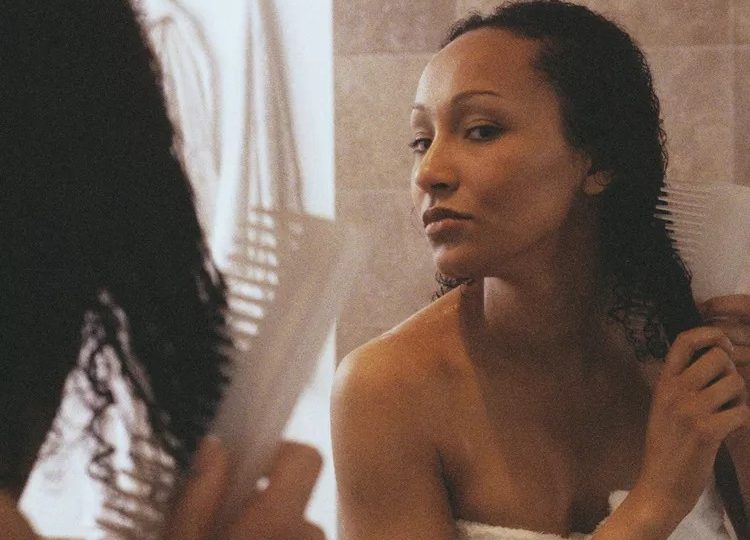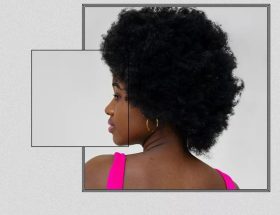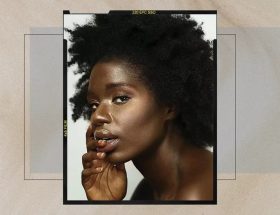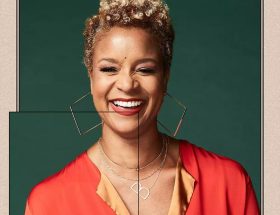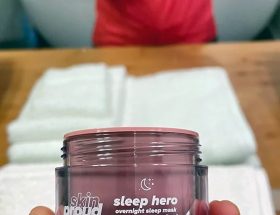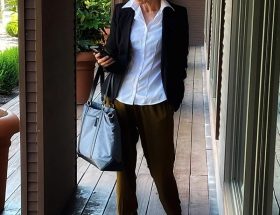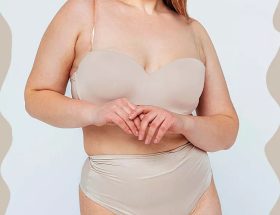How to Repair Your Natural Curl Pattern After Damaging Your Hair
hether you’re embracing your natural curl pattern for the first time or washing your hair after heat-styling for a big event, you’re likely dealing with some majorly fried locks. Any naturally curly-haired person knows the *sizzle, pop, and hiss* of their hair inside of an iron means dry, damaged curls that are just not the same afterwards. Your initial reaction may be to panic (or pick up a pair of scissors), but your curl pattern and health is not a lost cause.
The bad news: Once hair is burned, there is no way to fully repair your curl pattern until new hair grows in to replace it. Unfortunately it takes only one bad burn to fry your hair, but repeated heat exposure has the same effect. While the damage to your hair can’t be undone, there are several steps you can take to improve the health of your current hair while waiting for new growth. We turned to two hair experts for their advice on getting your natural curl pattern back after you’ve fried your hair.
Nianda Reid, MD, MBA, is a board-certified dermatologist in Philadelphia, and the co-owner of Embrace Dermatology and Aesthetics, LLC.
Shab Reslan is a certified trichologist and hairstylist based in New York City, specializing in hair growth and scalp health. She hosts the Hair Like Hers podcast and is the founder of the soon-to-launch hair health platform, Leona, which matches women with hair growth solutions using AI technology.
01″Thermal tools are by far the leading cause of hair damage. Once you burn the hair, there’s no going back until you grow new hair. All it takes is one time and the damage is irreversible,” Reslan warns. With this in mind, do your hair a favor and put down the heat styler. This is the only way to completely prevent further damage to the hair and it is the fastest way to restore your curl pattern after frying it. This does not mean sacrificing beautiful hair. This could be a great time to consider a protective style. Or, if you like a loose curl or wave, try a heatless method to achieve your favorite look.
02Indulge in Deep Conditioning Treatments
Whether you purchase a moisture-rich conditioning mask or make your own, giving your hair some love with a deep conditioning treatment is a good rescue to damaged hair follicles, Reid shares. Both experts agree that fried hair needs moisture, and deep conditioning treatments are a great way to provide intense hydration. Reid says, “Some of my favorites are the Briogeo Don’t Despair, Repair Deep Conditioning Mask, the Pantene Intense Rescue Shots, and the Keraphix Keratin Gel Treatment by Nexxus. If you are inclined, at home hair masks containing moisturizing ingredients like avocado and olive oil can help prevent further damage to the hair strands.”
“Nursing your hair back to health takes patience, but I promise, following the correct protocol is worth it. Firstly, you want to provide immediate nourishment and moisture to your hair by using a clarifying shampoo from roots to ends, followed by a deep conditioner or hair mask,” Reslan explains. She recommends Essential Conditioner Daily Masque by Rare El’ements for deep hydration.
03Ensure HairIs Completely Dry Before Heat Styling
If you are going to use thermal tools, make sure that your hair is completely dry first. Reslan says we can further damage our hair using thermal tools when there is any remaining moisture in the hair. If you’re about to use your hot tool while your hair is still the slightest bit wet from washing it, you will burn your hair even faster. The hot tool overheats the water in your hair and burns the cuticles of your hair,” Reslan warns. Heat styling damages the curl pattern as it is, so allow ample time to blow-dry or air-dry hair before using hot tools.
04Both experts agree that heat protectant is a must if you continue to use straighteners and curling irons. “Thermal protectants work, so if you’re the type who likes to flat-iron your hair straight or curl it often for those waves, be sure to coat your cuticle with a heat-protectant spray first,” Reslan explains. She recommends Maxxam Thermal Styling Spray, which protects your hair from the damaging effects of a blowdryer or a flat or curling iron without making hair sticky or greasy.
05Heat is not the only culprit behind fried hair. Reid says that “chemical influences such as perms, coloring, or bleaching agents can also damage the hair cuticle and cause hair damage.” If your hair is feeling brittle, fried, or damaged, it’s best to stay away from hair coloring for the time being – especially if your coloring requires bleach. If you must color your hair, consider dying it closely to your natural color to allow your hair time to heal and grow out before you need further treatments. While you’re in the stylist’s chair, consider getting an in-salon treatment for damaged hair. They can be pricey, but the results are often significant.
06Regardless of texture, all hair types are prone to damage. Hair damage can be caused by a number of physical, chemical, and environmental factors. “Believe it or not, even harsh weather such as extreme sun, wind, and cold can damage the hair cuticle,” Reid cautions. It is important to apply protection like the Philip B Thermal Protection Spray before a day at the beach or pool in order to prevent further damage to your hair from the sun, chlorine, and salt water. Pro tip: Keep a small bottle in your beach bag to make sure you never hit the shore without it.
07While opting for air-drying instead of blow-drying can be great for your hair, Reslan recommends going a step further and “slow drying” your hair. “Drying your hair ‘slowly’ means keeping it protected while drying, as in pinning it up in a bun, keeping it wrapped, or even in a pony — instead of leaving it down to air-dry or blast drying it with the blowdryer. Slowly drying your hair retains more moisture, and your curls/waves will dry smoother and shinier,” Reslan explains. You can “slow dry” your hair by following these steps:
After your shower, pat dry your hair or wrap it in a microfiber towel to dry slowly.
Apply a leave-in conditioner from roots to ends, then pin hair into a bun or pull it into a ponytail.
Allow hair to dry slowly and absorb moisture from the water and leave-in conditioner.
08All styling products are not equal. When caring for fried or damaged hair, it’s important to use styling products that provide both moisture and restorative ingredients that treat damage. Reid recommends hair products that are rich with humectants, emollients, glycerin, and ceramides to help prevent damage to your strands. Products containing hydrolyzed keratin can provide elasticity and shine to repair fried hair. Sweet almond oil is another powerhouse ingredient to look for, as it contains many important vitamins and omega fatty acids that not only provide healing to the hair but promote new growth as well. The Pink Root Leave-In Conditioner contains both keratin and sweet almond oil, among several other essential nutrients for hair, which allows you to treat your damaged curls as you style them.
09There are many aspects of your routine outside of heat styling that can be damaging your hair. First, consider what you’re using to detangle your fragile, damaged strands. Reid says, “Using the proper detangling tool regardless of hair type is essential to maintaining the health of those precious locks.” Next, consider swapping out your usual towel for a microfiber one. The microfiber towel is less disruptive to the follicle of your hair and is less likely to overdry your hair. Finally, it might be time to invest in a silk pillowcase. At the very least, Reslan recommends protecting your hair during sleep, either by putting your hair up in a bun with pins or scrunchies or another protective style. “Putting your hair up at night protects your cuticles from getting roughed up and even preserves a smooth look,” she explains.
10As Reslan previously explained, the heat damage to hair is permanent. One of the best things to improve the overall health and appearance of your hair is to get a trim to cut off the heat-damaged hair. You can wait until new hair starts to grow in, or kick-start the healing process by cutting off the ends. Reid agrees, sharing, “Don’t forget to take care of those ends and trim breakage when needed.” Trimming damaged hair will improve the appearance of your curl pattern, and less hair means less hair products, which could save you money in the long run.
